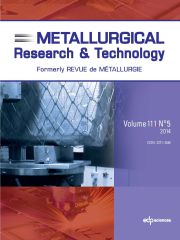Article contents
The current development and latest achievements in cokemaking technology
Published online by Cambridge University Press: 23 April 2003
Abstract
The coke making industry has seen substantial technological development over the last decade. Conventional coke ovens (slot type ovens) with raw gas recovery have reached dimensions of more than 8 m height and 90 m3 useful oven volume, boosting the capacity of a single battery to 1.3 Mt/y and the production of a single coke plant with one operating team to 2.6 Mt/y. At the same time, the emissions from batteries and gas treatment facilities have been reduced to the lowest amounts ever. A further increase in energy efficiency and environmental protection for conventional coke batteries is expected from the combustion of the hot raw gas with subsequent generation of electricity. The concept of a coke plant with direct combustion of the raw gas would omit the entire gas treatment plant and produce only coke and power. Aside from these achievements with conventional coke oven batteries, the non-recovery technology has also found acceptance. Coke plants of this type are in operation in the USA, Australia and India. One plant in the USA is a heat-recovery coke plant that produces power from the waste gas. Further improvements in plant efficiency and coke quality are achieved with stamping of the coal charge, which is now developed for non-recovery ovens, too.
Information
- Type
- Research Article
- Information
- Metallurgical Research & Technology , Volume 100 , Issue 3: CokerieAgglomérationHaut-fourneau , March 2003 , pp. 243 - 250
- Copyright
- © La Revue de Métallurgie, 2003
- 8
- Cited by

